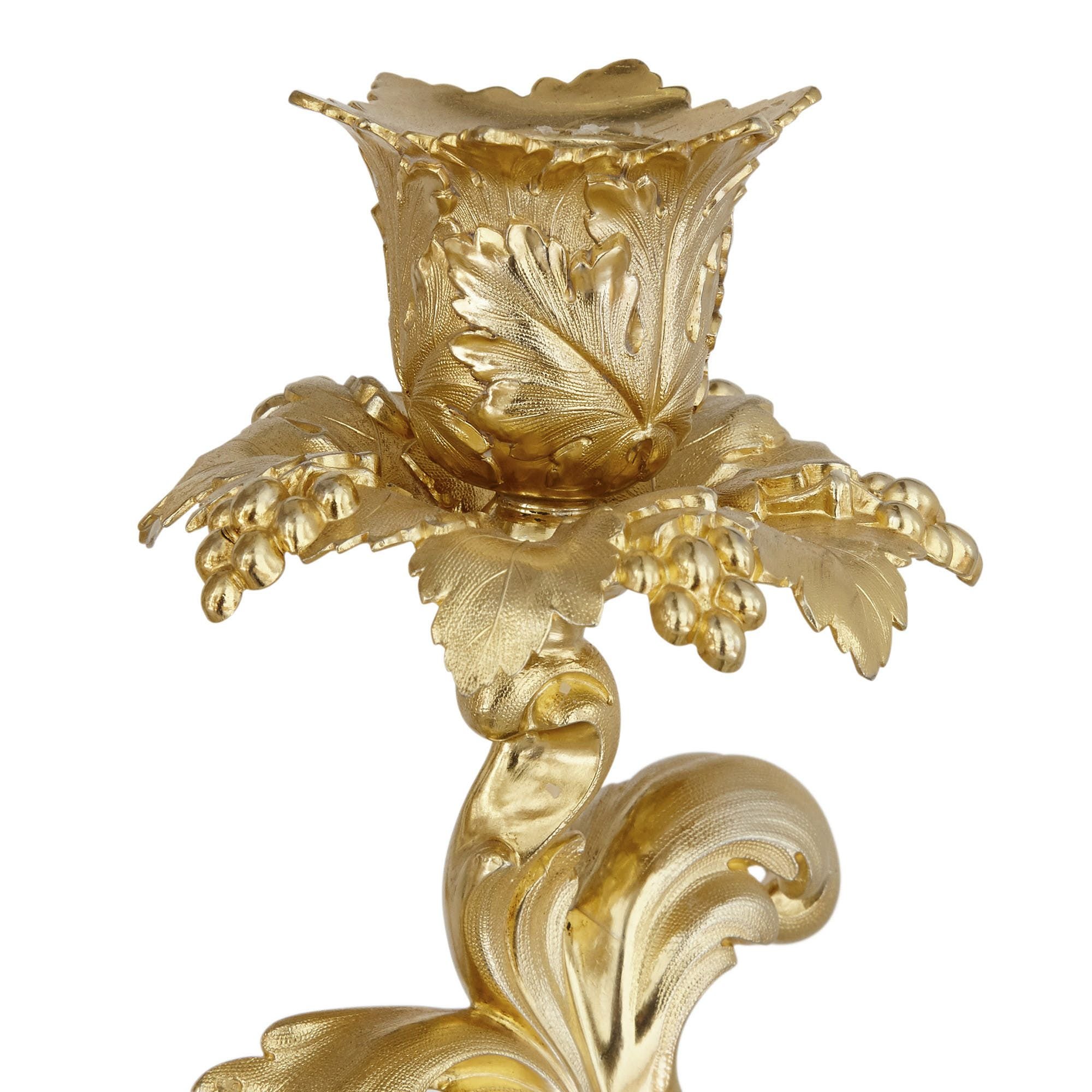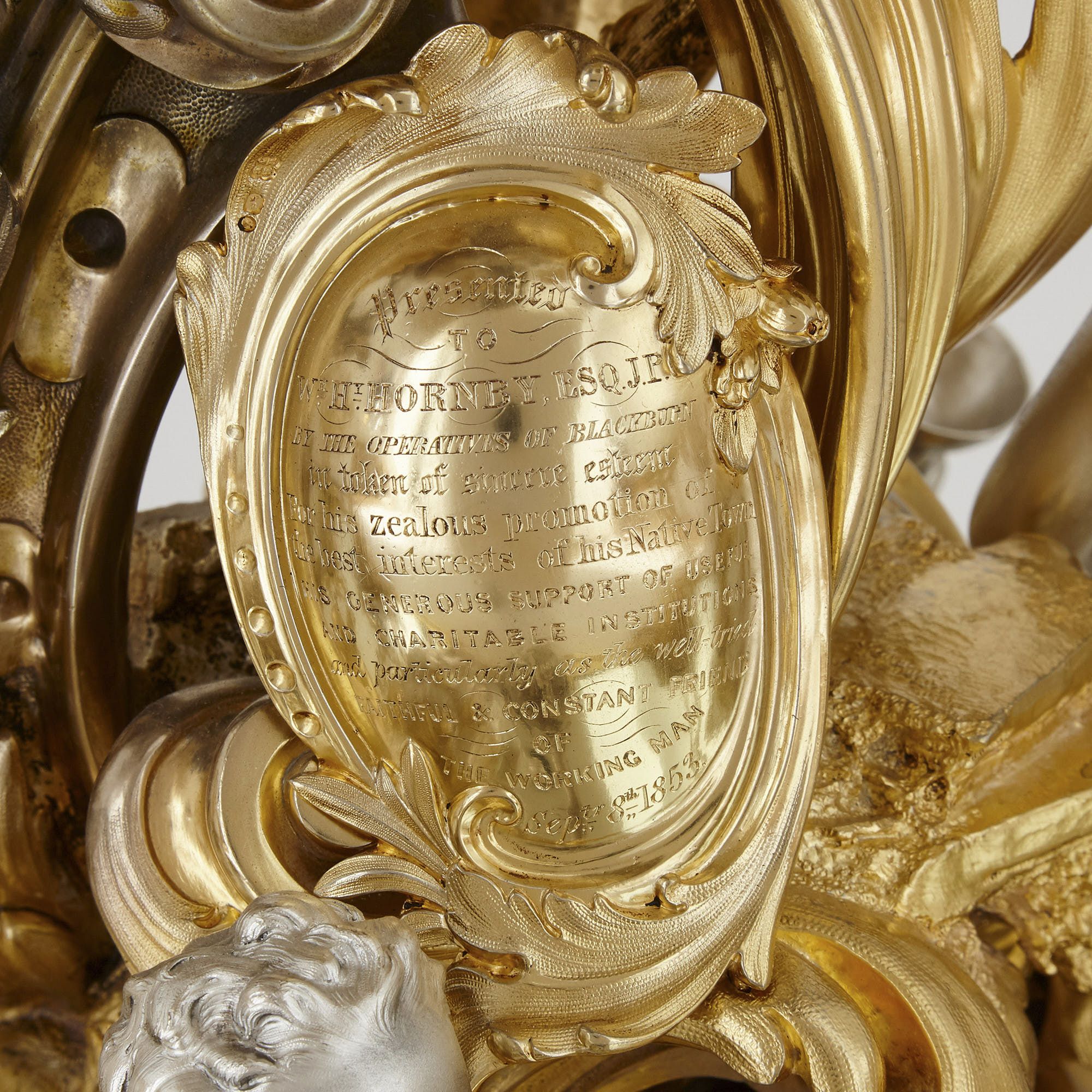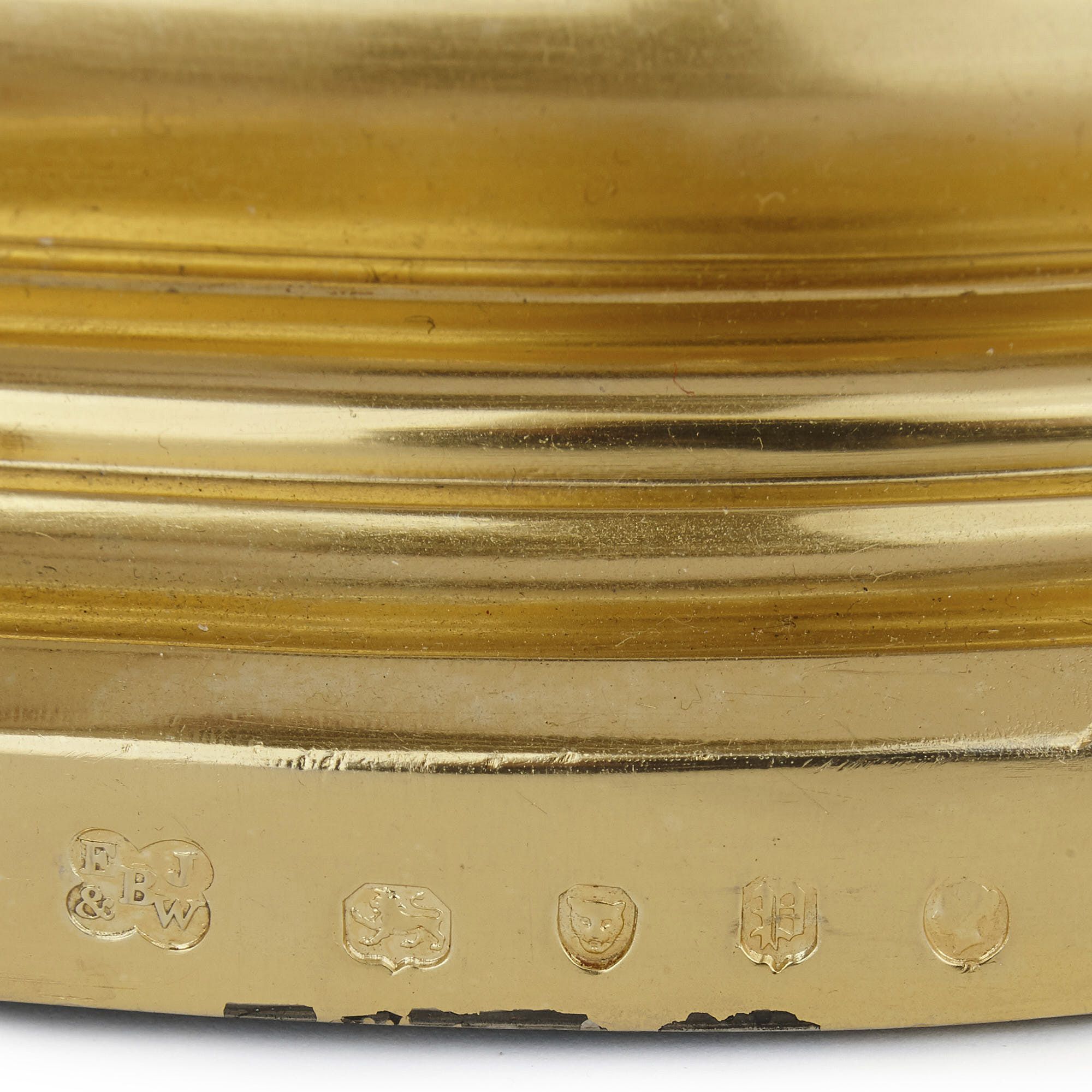This truly impressive surtout de table is by the English silversmiths Edward Barnard & Sons. The firm, which originated during the late 17th Century, finally closed in 2003. Renowned in their day and since, the silversmiths reached their zenith and the peak of their fame during the Victorian period, and received several important commissions, including the manufacture of the Lily font, a large baptismal font commissioned by Queen Victoria and used since for christening services by members of the Royal Family.
The present surtout is constructed from silver and silver-gilt in two sections, with the curved, serpentine sides moulded with shells, rocaille forms, and scrolling motifs. The surtout is set on both ends with seven-light candelabra, the scrolling branches of each moulded with foliate detailing. Beneath the scrolling structure of each candelabrum is a cut-glass bowl, raised on a scrolling silver-gilt support. The sides of the mirrored plateau of the surtout are mounted with four foliate cut-glass bowls, raised on conforming scrolling silver-gilt supports. Most strikingly, the surtout is centred with a large candelabrum issuing six lights and surmounted by a large cut-glass bowl. The structure of the central silver-gilt candelabrum is mounted with five silver putti, who climb through the foliate branches while holding grapes and wine cups. This candelabrum features two cartouches, one of which is inscribed with the following:
“PRESENTED TO W H HORNBY, ESQ. J.O. BY THE OPERATIVES OF BLACKBURN IN TOKEN OF SINCERE ESTEEM FOR HIS ZEALOUS PROMOTION OF THE BEST INTERESTS OF HIS NATIVE TOWN, HIS GENEROUS SUPPORT OF USEFUL AND CHARITABLE INSTITUTIONS AND PARTICULARLY AS THE WELL-TRIED FAITHFUL & CONSTANT FRIEND OF THE WORKING MAN, SEPT 8TH 1853”
‘W H Hornby’, or William Henry Hornby (1805-1884), was a native of Blackburn and one of that city’s most celebrated industrialists. Moreover, Hornby, who made his money as a cotton spinner, was elected Blackburn’s first mayor in 1851 and served for some time as chair of the Conservative Party. The present surtout was presented to Hornby in 1853 as part of a large celebration attended by over ten thousand people. Both the celebration and the gift of the present surtout made the news, with one commentator in the Blackburn Standard remarking that the piece, ‘of the Louis Quatorze style’, demonstrated the great ‘skill of the artist’ who designed and produced it.




















